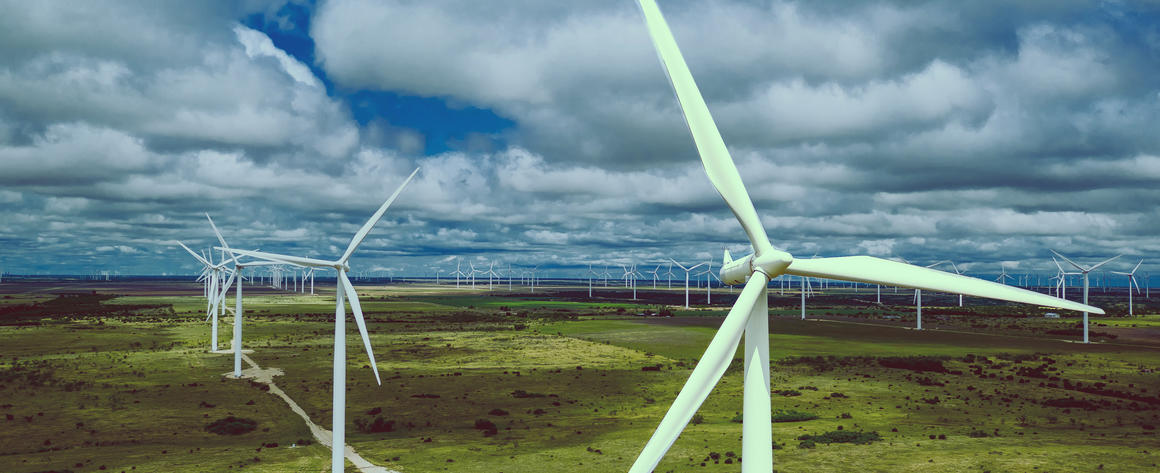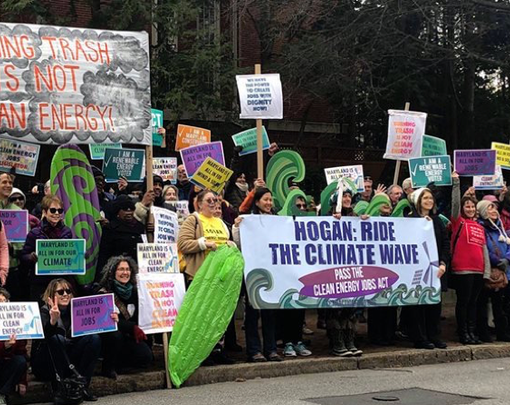In 2019, New York State lawmakers passed the most ambitious state-level climate legislation in the country—and among the most ambitious in the world. The Climate Leadership and Community Protection Act (CLCPA) mandates that New York’s electricity sector become greenhouse-gas-emission-free by 2040 and achieve an 85% reduction in all emissions by 2050.
Crucially, it also establishes that 35%–40% of the investment-led benefits to decarbonizing the state’s energy system go directly towards disadvantaged communities, which have borne the social, environmental, and public health costs of the fossil fuel energy system, the climate crisis, and economic insecurity. This report proposes that the New York Power Authority (NYPA)—the largest state-owned energy provider in the United States—play a key role in implementing this ambitious, and equitable, climate plan.
A New Era of Public Power: A vision for New York Power Authority in pursuit of climate justice shows that NYPA is uniquely positioned to carry out CLCPA mandates in alignment with the rapid and just decarbonization goals of the law. NYPA’s public ownership structure also opens up new and more equitable financing opportunities for the entire state. Furthermore, because it is a publicly owned energy provider, its activities can be democratically accountable to New Yorkers, particularly those historically burdened by the impacts of energy infrastructure and climate crisis.
As both the owners and customers of NYPA, New Yorkers have the opportunity to demand, build, and benefit from a more democratic and equitable energy system. The NYPA energy transition investments proposed in this report could create somewhere between 28,410 and 51,133 total direct and indirect jobs and between $48.6 billion and $93.5 billion of additional economic activity by 2030.
Why NYPA can lead on equitable decarbonization
• Fewer profit incentives: As a nonprofit entity, NYPA has incentives that are not driven by the focus on quarterly earnings statements and shareholder value that dictates the behavior of private utilities and independent power producers (IPPs). This means NYPA can consider additional sources of value and benefits in designing its goals, strategies, and structure. It also enables NYPA to be a supportive partner in reducing energy consumption through efficiency gains—something largely antithetical to the private utility business model—and creating transparent, mutually beneficial relationships with community partners. Any revenues generated by NYPA can be reinvested into the grid, lowering customer bills, or in other economic development projects throughout the state that create jobs and wealth in disadvantaged communities.
• Coordination with the state: Instead of attempting to induce better behavior from private utilities and producers through complex and costly incentives and regulations, the state can leverage its own power via NYPA to quickly and effectively implement the CLCPA. There is also the possibility to create efficient partnerships with other governmental agencies, especially NYSERDA (New York State Energy Research and Development Authority) and the Office of Renewable Energy Siting (ORES).
• Democratizing energy: Because it is a public entity owned by and accountable to New Yorkers, there are more opportunities to mold NYPA into a more democratic institution than a private company would allow. Legally, NYPA is already held to statewide standards of open meeting laws, freedom of information, prevailing wage laws, and more. Robust democratic reforms, including heightened accountability, transparency, and stakeholder participation standards, would help ensure that the CLCPA’s 40% benefits standard is realized in New York’s disadvantaged communities.
• Cheap and equitable financing: NYPA’s standing as a public institution means that it has access to the municipal bond market, lowering the cost of capital and the price of electricity compared to private companies. This access to cheap capital, combined with the lack of a profit-maximization incentive and a mandate to prioritize disadvantaged communities, should allow NYPA to increase its investment in a host of decarbonizing strategies without significantly raising costs for communities. These features also distinguish NYPA from NYSERDA, which has provided necessary financial resources but is funded in large part via a line item on consumers’ utility bills.
For NYPA to realize its full potential to achieve the CLCPA timeline and equity goals, this report proposes that New York should:
• Ban for-profit energy service companies and make NYPA a public option energy provider. Right now, NYPA is limited in terms of who they can provide energy to in the state. NYPA should be empowered to provide energy to end-use consumers in the state as well as towns with Community Choice Aggregation (CCAs). The state should also ban the use of for-profit Energy Service Companies (ESCOs), transitioning those customers to NYPA as their energy provider. Eliminating for-profit ESCOs would both eliminate predatory operators in the state and replace them with publicly owned power production that has clear mandates for renewable energy. Additionally, NYPA could act as an alternative energy provider, with progressive rate structures that support low-income households. For a truly just and competitive energy market in the state, New Yorkers deserve a public option for electricity.
• Expand NYPA’s development of renewable energy and phase out fossil fuels. The state should establish mandates for NYPA to fully decarbonize its existing energy infrastructure, and decommission its fossil fuel plants by 2025. NYPA should be given the “right of first refusal” for all renewable projects over 25 megawatts to give the public more agency in the renewables scale-up process. This would ensure that utility-scale projects in the state are deployed with high levels of community participation, and strong labor, environmental, and community benefit standards. It would guarantee that benefits of the new infrastructure reach disinvested communities, creating between 75,750 and 34,700 total jobs and between $15.0 billion and $59.8 billion in additional economic activity between now and 2030. Moreover, by investing in distributed renewable energy, NYPA will help build up climate resiliency in the state, build close ties with residents, and lower bills for users. The state simply cannot meet the 35–40% benefit standard of the CLCPA without such a provision.
• Expand efficiency and electrification efforts. NYPA has already positioned itself as a major player in both efficiency and electrification efforts. NYPA should accelerate its efficiency programming, with a particular focus on supporting low-income housing to alleviate energy poverty. This could create 16,425 sustained jobs between now and 2030, and an economic impact of $25.3 billion in additional economic activity. Historically, NYPA has used bulk purchasing power to lower energy costs from appliances in low-income housing—a strategy that could be used again to lower efficiency and electrification costs. NYPA should also expand its transportation electrification programming for a more comprehensive transition to electrified transport infrastructure.
• Invest in equitable transmission and storage infrastructure. Because NYPA is a major transmission actor, its continued investment in public transmission infrastructure will be key to connecting upstate renewables to downstate residents, while also curtailing unnecessary transmission buildouts. NYPA should also maintain its existing energy storage infrastructure while promoting just sourcing of new grid-scale battery projects.
• Increase democracy in NYPA. Its expanded role in the energy ecosystem of New York also comes with significant responsibility. The enterprise should be held to high standards of transparency, accountability, equity, and participation. Any changes at NYPA should come with structural reforms that reflect New York’s commitment to disadvantaged communities and workers. NYPA should shift its utility board structure towards a multi-stakeholder model, including representation from community and labor groups. Specifically, it ought to create an Office of Community Engagement, co-hosted with NYSERDA, to coordinate transparency, community input, and accountability. To reflect differing regional needs, Regional Hubs could operate as conveners of job opportunities, community review, and more. Structural reforms not only would reflect New York’s commitment to environmental justice communities and workers but would strengthen NYPA by building grassroots support.
• Set high labor standards for green jobs in New York. The transition towards a renewable energy economy will take a massive commitment and has the potential to create a huge number of jobs in New York. Expanding NYPA’s role in that transition could create new baselines for the renewable energy sector—where salaries need to be raised, and avenues to unionization encouraged, to appeal to workers with unionized jobs in the fossil fuel sector. It can do so by requiring high-level labor standards and unionization for projects, lifting up small, women-owned, and minority-owned businesses; and accelerating the cooperative and social enterprise economy in the state. By being intentional about project development, NYPA can be an anchor for positive forms of economic development in disadvantaged and environmental justice communities via workforce training, pathways to unionized employment, and clear community benefits and project labor agreements.
Ultimately, by prioritizing equity and environmental justice, NYPA will recreate a New York that is not only more livable, but also more sustainable looking forward into the future. NYPA plays a monumental role in simultaneously mitigating and adapting to the climate crisis in New York State, while serving as a model for public power authorities in other states that might also follow NYPA’s bold example.




